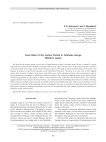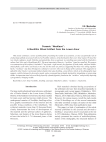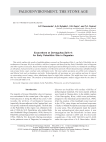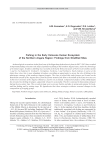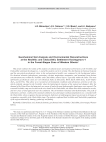Paleoenvironment, the stone age. Рубрика в журнале - Archaeology, Ethnology & Anthropology of Eurasia

Classic Samarra painted pottery from Yarim Tepe I, the Neolithic of Northern Iraq
Статья научная
This study focuses on the Classic Samarra painted ware from the Standard Hassuna layer at Yarim Tepe I, in Northern Iraq. Two groups of imports are described. The first consists of Classic Samarra, apparently related to Central Mesopotamia; the second, of Samarra Ware imported from the west. It is hypothesized that the Samarra pottery was imported not only from the center to various parts of the periphery, but also from one part of the periphery to another. As a result of comparison of the ceramics, a hypothesis is proposed that Classic Samarra was formed based on a symbiosis of two earlier cultural groups: the Proto-Hassuna period in Northern Mesopotamia, and Neolithic traditions originating from Central Zagros.
Бесплатно
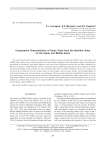
Comparative characteristics of stone tools from the Neolithic sites on the Upper and Middle Kama
Статья
Бесплатно
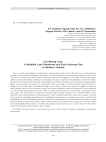
Con moong cave: a stratified late pleistocene and early holocene site in northern vietnam
Статья
Here, we outline the fi ndings of comprehensive archaeological studies in Con Moong Cave, northern Vietnam, carried out by the Russian-Vietnamese Expedition, with the participation of Australian specialists, in 2010–2014. The cave is a stratifi ed site, whose habitation deposits span a period beginning ca 42 ka BP. A detailed description of fi nds is provided. Diachronic changes in artifact types, use of raw materials, and technology are presented. Lithics from layers K–S represent the Early Upper Paleolithic Sơn Vi culture. Finds from layer K include core-shaped debris, fl akes, and a discoidal side-scraper (or sumatralith). Tools were made on quartzite pebbles. Finds from layer L, dating to ca 36 ka BP, attest to substantial changes in the choice of lithic raw material: in addition to quartzite, mostly andesite and, less often, limestone, basalt, and certain sedimentary rocks were employed. Primary reduction was not preceded by preparation of nuclei. Flakes are large and medium-sized. Tools include a sumatralith and an end-scraper. The richest material comes from Con Moong layers Q and S, dating to 26–21 ka BP. Preforms consist of pebble cores with unprepared striking platforms. Nuclei include fl at-parallel, radial, and irregular varieties. New tools in the assemblage include choppers, longitudinal and transverse convergent side-scrapers, and discoidal sumatraliths, as well as Hoabinhian axes and a unilateral axe (sumatralith). We conclude that archaeological remains from Con Moong Cave provide evidence of the evolution of the Sơn Vi culture from its emergence to its replacement by the Hoabinhian Technocomplex ~25 ka BP. Lithic industries from layers K and L correlate with one of the earliest stages in the peopling of this region by Homo sapiens.
Бесплатно
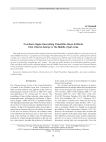
Cruciform signs decorating Paleolithic bone artifacts from Cherno-Ozerye II, the Middle Irtysh area
Статья
Бесплатно
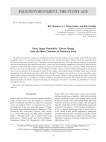
Early Upper Paleolithic Tubular Beads from the Main Chamber of Denisova Cave
Статья научная
The authors present the results of a technological and functional analysis of bone tubular beads from the Upper Paleolithic layer 11 in the Main Chamber of Denisova Cave, northwestern Altai. Tubular beads are among the most widespread categories of Early Upper Paleolithic ornaments from the cave. The technological sequence of operations has been reconstructed. It included several stages: selection of blank, planing, manufacture of preform by truncating the epiphyses, ornamenting the preform, marking preforms for fracturing into short tubes, sawing or cutting, fragmentation by cuts, removal of cancellous bone, and smoothing the fracture surfaces. Prepared blanks and diagnostic production waste were not noted in the technological context of the complex; this indicates that the tubular beads were probably manufactured outside the excavated area of the Main Chamber. The analyses revealed traces of wear caused by contact with clothing or human skin and by threading on a string or thin strap. Tubular beads were used by the Upper Paleolithic inhabitants of the cave as elements of clothing, necklaces, and probably bracelets. The closest but still considerably distant parallels to the tubular beads from the Altai are Aurignacian ornaments of a similar age from Western, Central, and Eastern Europe.
Бесплатно

Early Upper Paleolithic serpentine ornaments from Ust-Karakol, Northwestern Altai
Статья обзорная
Бесплатно
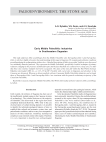
Early middle paleolithic industries in southeastern dagestan
Статья
This study addresses lithic assemblages from the Middle Paleolithic sites Darvagchay-Zaliv-1 and Darvagchay- Zaliv-4, which are highly relevant to the understanding of this stage in Dagestan. We examine paleoclimatic conditions prevailing during the sedimentation at these sites. A detailed description of lithics is provided. Artifacts were discovered in a minimally disturbed paleosol. They represent the Middle Paleolithic, specifi cally Levallois technique of primary reduction. Judging by the presence of unlined fi re-pits and the fact that fi nds are scattered over a large area, we infer that these sites evidence multiple short-term occupation. The dates of the sites fall within the Riss-Würm (Eemian, Mikulino) interstadial (MIS 5e)—ca 125–110 ka BP. Parallels with coeval sites in Dagestan and elsewhere in the Caucasus are discussed. Whereas no direct parallels with any Caucasian Middle Paleolithic industries can be found, those of Darvagchay-Zaliv-1 and Darvagchay-Zaliv-4 are consistent with the general evolutionary trajectory of the Caucasian Paleolithic.
Бесплатно

Findings from the Paleolithic studies in Siberia
Статья научная
It was long believed that Siberia with its harsh environment and climate had been peopled by humans rather late, and that the culture of early Siberian hominins was primitive. Wide-ranging discoveries of the last 3–4 decades, carried out by archaeologists of Siberia, especially those from the Institute of Archaeology and Ethnography SB RAS in Novosibirsk, with the participation of experts in other disciplines such as geology, geochronology, paleontology, paleobotany, genetics, etc., indicate very early dates of the initial peopling of Siberia and a new taxon, H. s. altaiensis, which is associated with one of the most interesting cultures in Eurasia and, along with the earliest anatomically modern African humans, H. s. neanderthaliensis, and H. s. orientalensis, had participated in the origins of anatomically modern H. s. sapiens.
Бесплатно
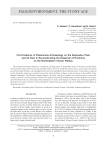
Статья научная
The northeastern Iranian Plateau is considered a leading region in Paleolithic studies. The history of Paleolithic research in this region dates back to the mid-20th century. However, unlike the western and, to some extent, the central part of the Iranian Plateau, only a handful of sites have been identifi ed in the northeastern part. Field studies conducted on the Neyshabur plain have provided some of the only Paleolithic evidence at four locations in the foothills of the Binalud Mountains: Dar Behesht, Mushan Tappeh, Ali Abad, and Qezel Tappeh. Our research aims to assess this evidence, provide a revised typology of Pleistocene artifacts from the Neyshabur plain, and also study the role of these and other fi nds in the area and analyze their signifi cance in terms of the dispersal of Pleistocene hominin populations. We propose two main corridors on the northeastern Iranian Plateau assumed to have been infl uential in the dispersal of human ancestors.
Бесплатно

Статья научная
We describe three processed fossilized bones of sea mammals of the Miocene age, discovered in various years, but in similar stratigraphic and planigraphic contexts, at the Early Paleolithic site Bogatyri/Sinyaya Balka, on the northern coast of the Taman Peninsula. We provide information on the age, stratigraphy, and planigraphy of the site, interpreted as a place for butchering carcasses of elephants and rhinoceroses (elasmotheres). Results of traceological analysis suggest that two fossilized seal bones had been split by the counterstrike technique on soft (wooden or bone) anvils, while the third bone had been more thoroughly processed. All three specimens may have been collected from coastal deposits. Fossilized seal bones were evidently used as raw material along with rocks and animal bones of the Taman faunal complex. Small and inconvenient as they are, such bones provided the hardest isotropic material available at the site. That their use was not incidental is convincingly demonstrated by artifact No. 1, found in 2005. The point made on this bone is situated in the middle of an intentionally prepared blade, in a notch fashioned by shallow retouch. This bone tool is quite similar to other points in the Early Paleolithic industry of Bogatyri/Sinyaya Balka. Tools of that category differ in shape and size, but are similar because of a special morphological element— a point (bec, borer, etc.) shaped by a combination of retouch and small encoches at any suitable place in the blank such as jointing or spall.
Бесплатно

